 |
 |
| Kelantan |
 |
 |
||||
|
Kelantan is a state of Malaysia. The capital and
royal seat is Kota Bharu. The Arabic honorific of the state is Darul
Naim, ("The Beautiful Abode"). State motto: Berserah kepada Tuhan Kerajaan Kelantan State anthem: Selamat Sultan Kelantan is positioned in the north-east of Peninsular Malaysia. It is bordered by Thailand to the north, Terengganu to the south-east, Perak to the west, and Pahang to the south. To the north-east of Kelantan is the South China Sea. Kelantan is a land of colourful traditions and scenic beauty. Located in the north-eastern corner of the peninsula, Kelantan, which translates as the "Land of Lightning", is an agrarian state with lush paddy fields, rustic fishing villages and casuarina-lined beaches. Kelantan is home to some of the most ancient archeological discoveries in Malaysia, including several prehistoric aboriginal settlements. With the Islamic Party of Malaysia (PAS) in power for many years, Kelantan is also Malaysia's most socially conservative and Islamic state. The name Kelantan is said to be a corruption of gelam hutan, i.e. the Malay word for the cajuput, or swamp tea tree (Melaleuca leucadendron). Other theories claim the name comes from the Malay word kilatan, 'shiny/glittery' or kolam tanah, 'clay pool'. The early history of Kelantan traces distinct human settlement dating back to prehistoric times. Early Kelantan had links to the Funan Kingdom, the Khmer Empire, Srivijaya and Siam. Around 1411, Raja Kumar, the ruler of Kelantan, became independent of Siam, and Kelantan became an important centre of trade by the end of the 15th century. In 1499, Kelantan became a vassal state of the Malacca Sultanate. With the fall of Malacca in 1511, Kelantan was divided up and ruled by petty chieftains, paying tribute to Patani, which in turn was a vassal of Siam ruling from Ayuthaya. In 1603, most of these petty Kelantan chiefs became subject to Patani. Around 1760, a chieftain of Kubang Labu in Kelantan succeeded in unifying the territory of the present Kelantan. Shortly thereafter, in 1764, Long Yunos was appointed as the Penghulu of Kota Bharu while his brother, Nik Muhammadiah, ruled as Sultan Muhammad I of Legeh in Kok Lanas. Nik Muhammadiah or Sultan Muhammad I, officially became the first sultan of Kelantan. In 1812, Long Senik, the adopted son of Mohammad I, sided with the Thais and was appointed by them as the Sultan of Kelantan, known as Sultan Muhammad II. He broke from Terengganu's influence and became a tributary of the Thais. In the 1820s, Kelantan was one of the most populous and prosperous states in the Malay Peninsula, having avoided the wars and disputes which plagued the southern and western states. Thais continued to play their role in manipulating Kelantan throughout the 19th century. Under the terms of the Anglo-Siamese Treaty of 1909, the Thais surrendered its claims over Kelantan, Terengganu, Kedah and Perlis to Great Britain, and Kelantan thus became one of the Unfederated Malay States with a British Adviser. Kelantan was the first place in Malaya to be occupied by the Japanese, who invaded on December 8, 1941. During the Japanese occupation, Kelantan came again under control of Siam, but after the defeat of Japan in August 1945, Kelantan reverted to British rule. |
|||||
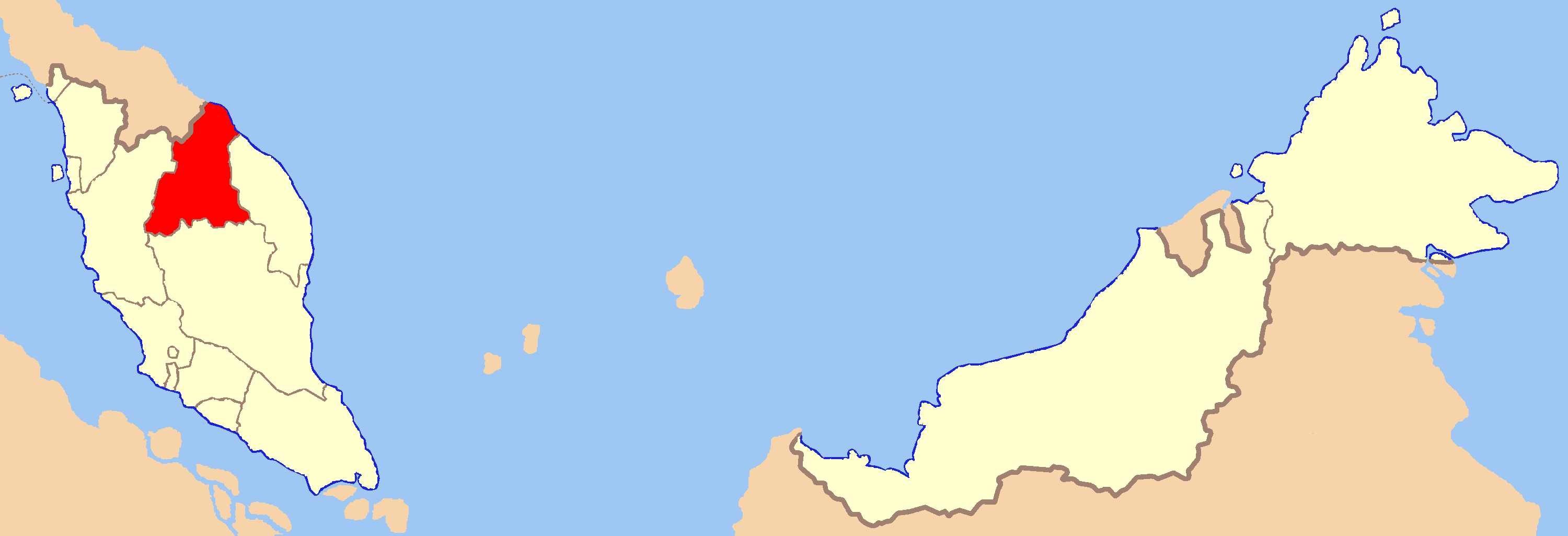 |
|||||
| Kelantan
became part of the Federation of Malaya on February 1, 1948 and together
with other states attained independence on August 31, 1957. On September 16,
1963, Kelantan became one of the component states of Malaysia. Rising high on the slopes of Gunung Korbu, the second highest peak in Peninsular Malaysia, the Nengiri River flows east to merge first with the Galas, and then with the Lebir — the latter born in the wilds of Taman Negara National Park — before turning decisively northwards and emptying into the shallow waters of the South China Sea. From Kuala Krai the conjoined streams become the Kelantan River, a broad, mud-coloured stream which dominates the fertile coastal plains and defines the geography of the region. The Kelantan River valley is a fertile rice-bowl, rich in hardwoods and rubber and lush with tropical fruits. For centuries, Kelantan was all but separated from the rest of the country by the Titiwangsa Mountains, a mountain range running from north to south through the peninsula. Weeks of hard travel were required to reach Kelantan. The "easy way" to Kelantan was to sail around the peninsula, braving the sea and pirates. For this reason Kelantan's history often involves the sea, and boats. Even today, many of its people are very much tied to the sea. A discussion with many coastal residents will confirm that their ancestors, as far back as they know, were "of the sea." In the early 1980s, trunk roads were built to link it with nearby states. Presently, one can travel by road from the capital city Kuala Lumpur to Kota Bharu through the mountain range within 5 hours. Kelantan has a chiefly agrarian economy dominated by rice, rubber and tobacco. Fishing along its 96-kilometre coastline is also an important economic activity. Cottage industries which employ traditional skills in handicraft production such as batik, woodcarving and songket weaving are also evident. Logging activities are active given the vast remaining area of forest. In recent years, tourism, especially to offshore islands, has increased in importance. A few reputable hotels have been established and more modern shopping malls have been opened to cater for urban folks. Kota Bharu, the capital, is the major urban centre, and there are also plans to open up the southern portion of the state under an ambitious multi-million-dollar development project. The main market at the city centre is a top attraction. Kelantan has a GDP per capita at about RM6000, which is about one-third that of other richer states like Selangor and Penang. But, it is a well-known fact that many Kelantanese are involved in small businesses and enjoy good income, but not reflected in the GDP calculation since in most cases the income is not reported. Starting from 2008, Kelantan will have its own airline company, Amrose Air, with Sultan Ismail Petra Airport as its hub. Amrose Air plans to service both domestic and international routes, with the international destinations including Bangkok (Thailand) and Jeddah (Saudi Arabia). |
|||||
 |
 |
||||
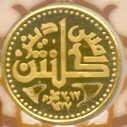 |
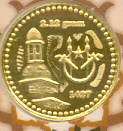 |
||||
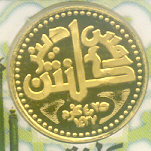 |
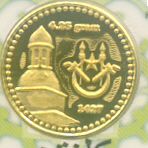 |
||||
|
Impressed by the Islamic Mint, the Kelantanese dinar is a currency that was created by the Government of
the Malaysian state of Kelantan in 2006 (27 Shaban 1427 AH corresponds to
20th Sep 2006). The Kelantanese Government attempted to give the dinar a
legal tender status, but this was vetoed by the federal Malaysian government
in Kuala Lumpur. Interestingly, the dinar has now been issued, albeit,
without a legal tender status. The only currency that is legal tender in
Kelantan is the Malaysian ringgit. The coins have a metallic composition of 22 carat gold. There are 4 denominations - 1/4, 1/2, 1 Dinar and a commemorative 2 Dinar. Probably main site:
http://www.dinarkel.com/ Article about it: The Islamic Dinar is a specific weight of 22k gold (917.) equivalent to 4.25
grams. As a consequence of currency crisis in Asia, in first of 1997, then Prime
Minister of Malaysia Mahathir bin Mohamad proposed introduction of Islamic
gold dinar as currency for international trade in the Muslim world. It was
supposed to suppress the too overly traded American dollar and ensure that
dollar's instability does not affect international trade because Islamic
gold dinar was to be tied to price of gold and thus provide stable value of
the currency. Mahathir announced that Malaysia was to start using the dinar
in mid-2003, but when in 2003 Abdullah Ahmad Badawi replaced him as Prime
Minister of Malaysia, this idea was halted. |
|||||
 |
|||||
| I got my Quarter Dinar (1.06g 22K) in Blue leaflet, Half Dinar (2.12g 22K) in Orange-Red leaflet and One Dinar (4.25g 22K) in Green leaflet coins from my Malaysian colleague Lokman Bin Omar through one of the Ar-Rahn Islamic pawnshops in the Kelantan state (Ar-Rahn Machang, Lot PT 371, Jalan Bakat, 18500 Machang, Kelantan, Malaysia. Tel: 09-975 0050. Fax : 09-975 0052). There is also a 2 Dinars 8.5g coin in Yellow leaflet issued on the occasion of 57th Birthday Celebration of His Royal Highness The current Sultan of Kelantan: Ismail Petra ibni al-Marhum Sultan Yahya (Born in 1949, Regent: 21st Sep 1975 to 29th Mar 1979 then Sultan since 29th Mar 1979). Probably the 2 Dinar coin had a limited mintage or in high demand that I was not able to grab one. Acording to my knowledge only these 4 gold coins are introduced by Kelantan State. So far I have not heard of any silver denomination Dirham(s) coins issued by Kelantan state. These coins are produced and Minted by: Mariwasa Kraftangan Sdn. BHD. | |||||
| Some more
coins were introduced into circulation in Kelantan on 12 August 2010, but
the Malaysian Ringgit also circulates in tandem. The World Islamic Mint (WIM)
of Dubai, United Arab Emirates has been given the authority by the
Government of Kelantan to strike a series of new coins. The denominations
that have now been struck are as follows; Silver - 1, 2, 5, 10 and 20 Dirhams. Gold - 1/2, 1, 2, 5 and 8 Dinars. |
|||||
|
|||||
| The obverses depict a monogram in Arabic within a decorative border. The reverses of these pieces depicts the full Kelantanese Coat-of-Arms. One official agent has been appointed to sell the coins to the public in Kuala Lumpur at: http://www.nubex.com.my/v2/. The website at: http://www.dinarkel.com/ has been updated to reflect the introduction of the new Kelantanese coins. | |||||
| Micro-Nations | |||||
| Chiefa Coins | |||||
